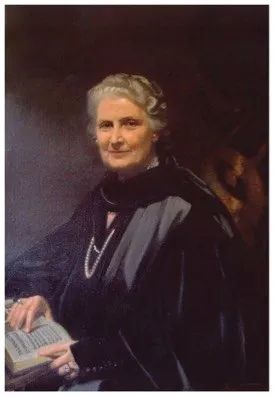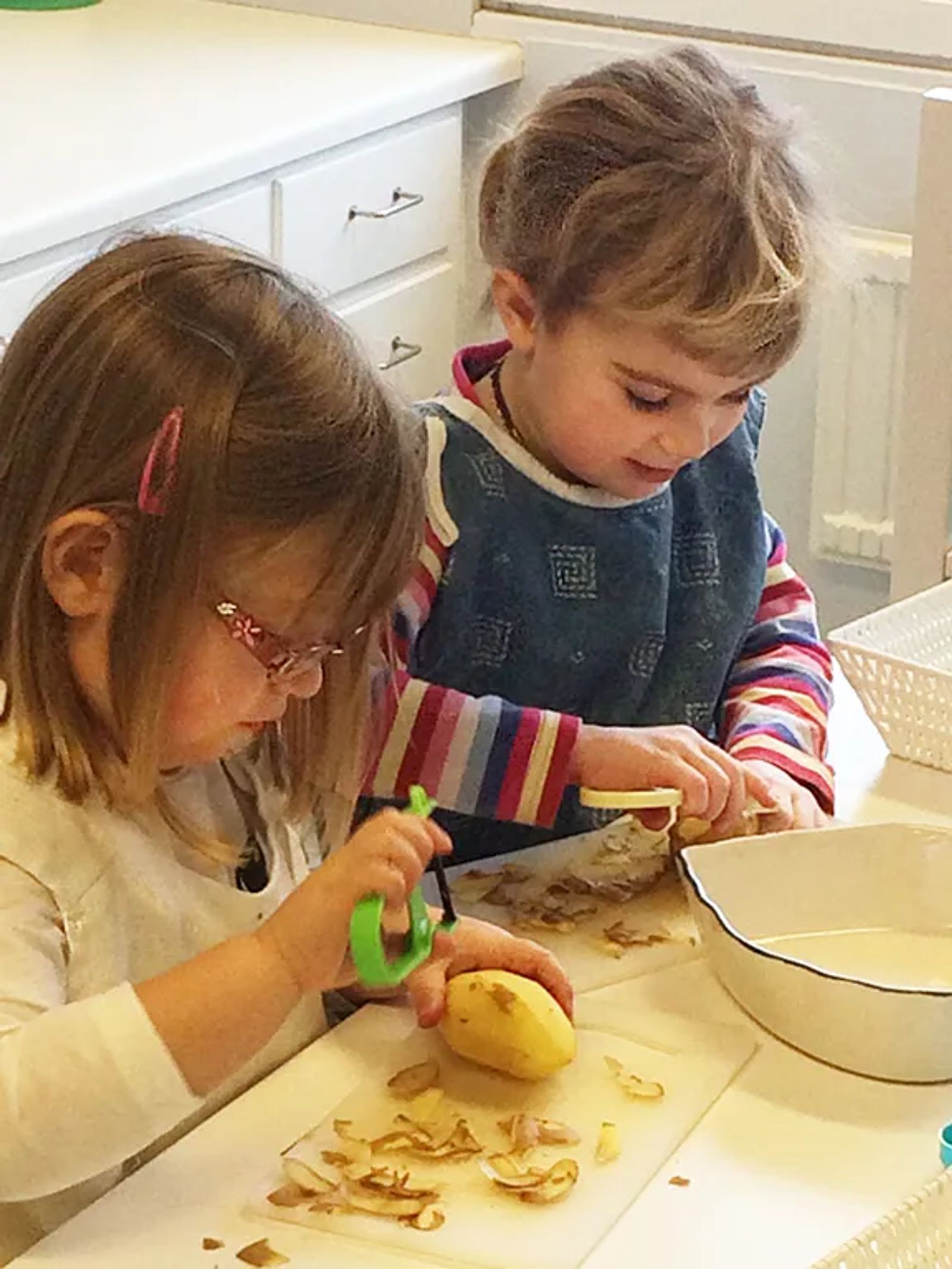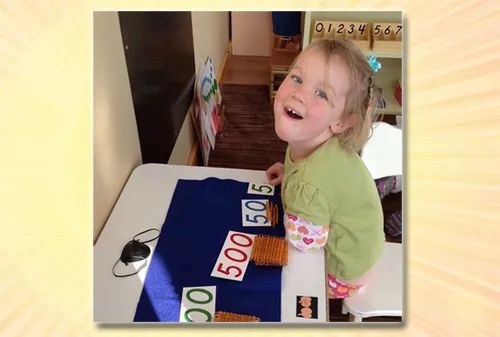From the Heart of Maria Montessori
 Maria Montessori, Italy’s first woman physician, noted educator and author spent nearly fifty years of her life investigating the child and the circumstances most favorable to child development. Those circumstances comprise what is generally known as “the Montessori method.”
Maria Montessori, Italy’s first woman physician, noted educator and author spent nearly fifty years of her life investigating the child and the circumstances most favorable to child development. Those circumstances comprise what is generally known as “the Montessori method.”

Montessori’s greatest contribution
Yet in a very real sense, her greatest contribution is not really education at all. It is a profound view of the role of childhood in human life, a largely unknown vision of the deepest, most powerful force in man, a force of spontaneous soul development most readily observable in childhood.
Educere – leading out from within
A deeper appreciation of Montessori’s great love and concern for the child and all of humanity, and a deeper analysis of her ideas leads to a completely new conception of education, which we may want to call the education of the heart. It is based on the Latin word, educere, which means to lead out from within. There is no reference to pouring fixed amounts of information into the child, which the child must then spit out on tests, but rather drawing out what is already within. It refers to the spontaneous force of life itself unfolding in natural cycles of development.
Maria Montessori brought to the world, through her years of work with children, a new vision of the importance of the early childhood years in the formation of man. Despite international acclaim for her work, she protested against being called an important educator. She said she was merely an interpreter for the child. She did not invent a method of education; she had discovered the true nature of the child, when left free to develop naturally.
True characteristics of the child
As a result of many years of scientific observation, and perhaps more importantly the astute interpretation of what she saw, she discovered what she believed were the true characteristics of the young child. Among the chief characteristics she cited:

- Amazing ability to concentrate and repeat activities that are of deep interest at specific levels of development
- Desire and ability to make choices
- Desire and ability to restore order and put things away
- Preference for work with learning materials rather than play with toys
- Indifference to rewards and punishments
- Love of silence
- Profound sense of dignity
- Self-discipline
- Spontaneous interest in writing and reading at about age four
- Sense of joy and strength from appropriate work
These characteristics are still at work!
I see these characteristics vividly at work as I visit Montessori schools. The level of focus, the kindness and camaraderie are amazing. The level of accomplishment in academics, in reading, writing and math is as it should be. When the materials are there for the children, laid out in logical sequence as inviting lessons that lead to mastering one step at a time, the children progress. And it is not forced. It is truly the unfolding of spontaneous development. It comes from deep within. The children work because they want to. Their needs for mental nourishment are being met. They love to engage in their very own work, which is nothing less than their own development!
Why have we not noticed?
 The question I always ask myself is, why have we not noticed these amazing traits? Why do we think children have short attention spans and are always into mischief? It comes down to the simple fact that as a scientist, Montessori wanted to see what children would spontaneously show her about their true nature. She created an environment with furniture and activities designed for their age and left them free to see what they would do.
The question I always ask myself is, why have we not noticed these amazing traits? Why do we think children have short attention spans and are always into mischief? It comes down to the simple fact that as a scientist, Montessori wanted to see what children would spontaneously show her about their true nature. She created an environment with furniture and activities designed for their age and left them free to see what they would do.

What the children did in the prepared environment amazed her and has continued to amaze people throughout the world for the past 100 years. Yet somehow, we underestimate who our children are and what they can do. If you stop to think about it, children want to learn. They want to be able to do things for themselves. The heart beats. The lungs breathe. We do not have to teach our children's organs to do what they were built to do. The brain learns. Why would we think that we have to teach everything that the child learns? We do not prepare the air our children breathe. We do not have to teach the heart how to beat. We need to have more faith in the child to learn when we place him in a rich, prepared environment at home or in school.
Stages of Development
Montessori identified stages in the development of children that offer us important milestones that require different kinds of intelligent care. First we have the period from conception to age seven, called the absorbent mind. During this period of life the child absorbs from the environment like a sponge, building himself out of the ideas, feelings and experiences in his environment. Montessori calls this marvelous self-development a kind of mental chemistry. It is a powerful stage during which the child’s work is building up the self, and it is precisely this stage that has been relatively unidentified until Montessori came along and powerfully called our attention to it. We are accustomed to thinking about the child in elementary school who has to study and memorize to learn. But in the early years of life, it is so much easier!
Every child has genius
The wise head of a Montessori school once said: “Now we all know that every child is not a genius, but I contend that every child has genius... the potential of his identity. As every flower has the seed within itself to fulfill its destiny, so locked within every child, I believe, is a blueprint of his destiny together with the resources to bring it forth.” It was such a hopeful message that continues to inspire me as I visit Montessori classrooms around the globe.
We know that whether or not the flower blossoms depends upon the fertility of the soil, the sun and the rain. So what are the mental and spiritual nutrients that our children need to fulfill their potential? We know they need our love and support. They need mental nourishment from a carefully prepared environment filled with age-appropriate materials that present real and interesting challenges. They need the freedom to follow their interests and abilities just as far as they are able to go. They need freedom to choose, freedom to move and they need our respect for their unique individuality.
How our schools may hold the children back
I overheard a conversation in a local restaurant that stunned me. It was a pre-k teacher telling of the gift of a box of crayons to her class. The children were excited and started to count them. The principal of the school happened to walk in when the children were up into the 80s, all chiming in with each number. The principal told the teacher in no uncertain terms that she had to stop. Children were only supposed to be able to count up to 20!
It appears that in all too many cases, there is a stifling of the genius within the child and a trend toward rote learning to suit the adult’s idea of curriculum for each month of each year. In my personal teaching career I have taught children from all ends of the spectrum, from certified geniuses to children with severe developmental delays and I have rarely if ever seen two children of the exact same age at the exact same level in anything. Here we see two children of the same age, one busy reading words, the other busy learning to use the button frame.

Let us never underestimate what our children can do!
It is so easy for us to underestimate the readiness, capacity and eagerness of children to learn. Yet the openness of consciousness during the first seven years is an opportunity not to be missed. During this stage learning is easy and effortless. Only with the advent of the reasoning mind at about age seven, does learning become a conscious effort. There is so much we can do with hands-on materials and activities that children flock to, that will facilitate the full potential of these all-important early years. Here in the picture on the left we see children building quantities and symbols from 1 to 9,999. On the right a five-year-old is building sentences with the movable alphabet. On the special day that I took this photograph, she asked me if she could teach me how to build a sentence. I was thrilled and accepted immediately! I was sitting right next to her, listening to her explain to me each step of what she was doing, sounding out the words or applying useful words such as "the" and "was" in her sentence as well as leaving space between words.)

Early-childhood education as self-construction
Perhaps the most important point is that parents and teachers, with all their love and support, do not create the mind of a child. The child constructs himself, out of the material available to him, the fulfillment of the sun, the rain and the fertile soil of the environment. As Montessori observed and learned about the often times unrecognized qualities of the young child, she discerned what she believed were the processes of this auto-construction. She wrote that, “Our first teacher, therefore, will be the child himself, or rather the vital urge… that leads him unconsciously. Not what we call the child’s will, but the mysterious will that directs his formation - this must be our guide.”
Education as the unveiling and developing of spiritual energy
Montessori believed in the unique power that resides within the young child. This power is the living energy of nature at work the child's development. Attention to this inner power, rather than to a curriculum of facts and skills, changes everything in the equation of education. She wrote that the goal of the teacher was not so much the imparting of knowledge as the unveiling and developing of spiritual energy. Successful homes and classrooms allow children the freedom to reach out and grasp their potential, and to develop spontaneously, at the rate of speed that nature decrees.
Next week’s blog
In the next couple of weeks we will talk about the next stage from six to twelve, when learning is the child's chief interest and the mental capacity develops rapidly in the precious years before puberty.




















